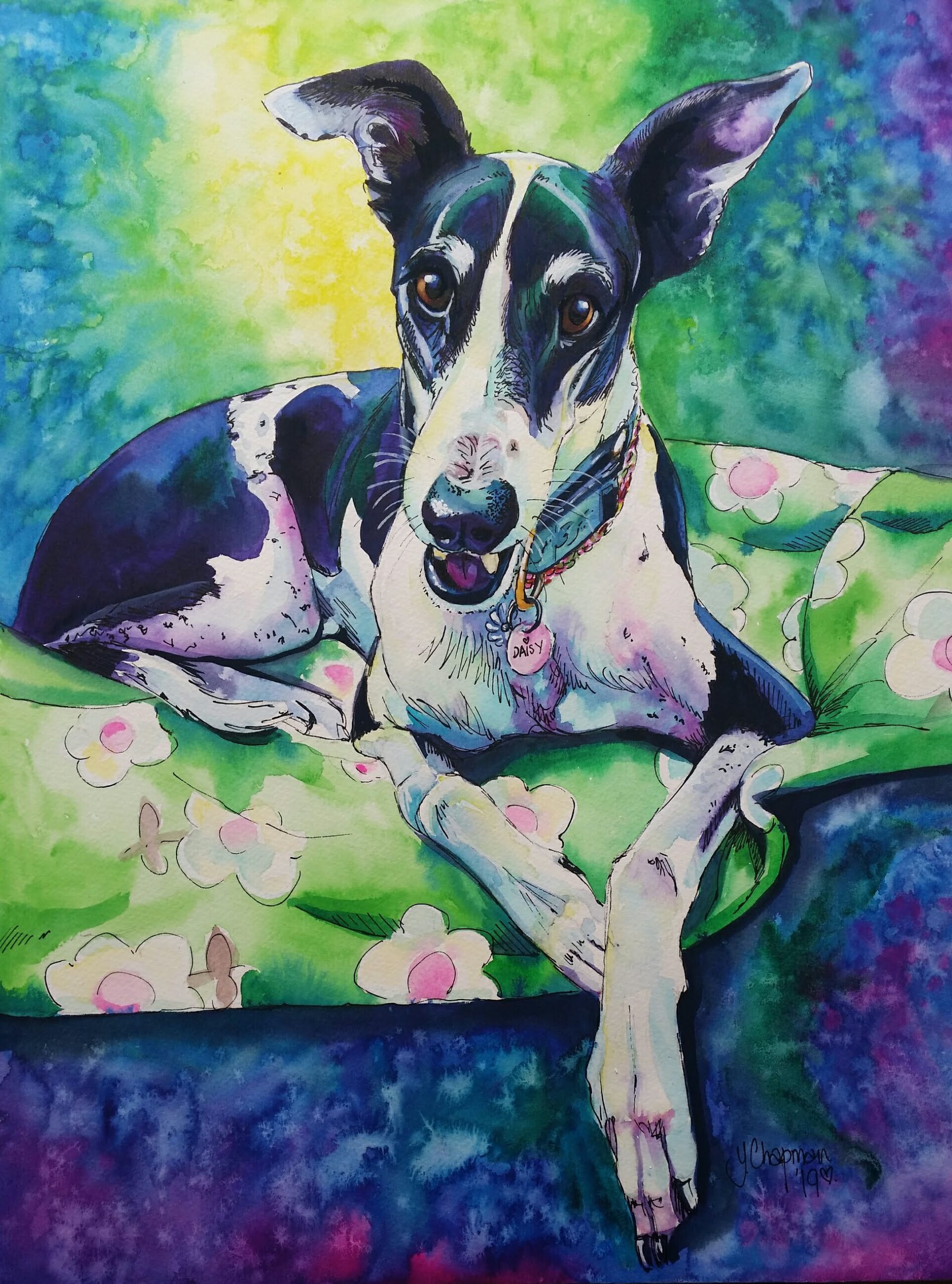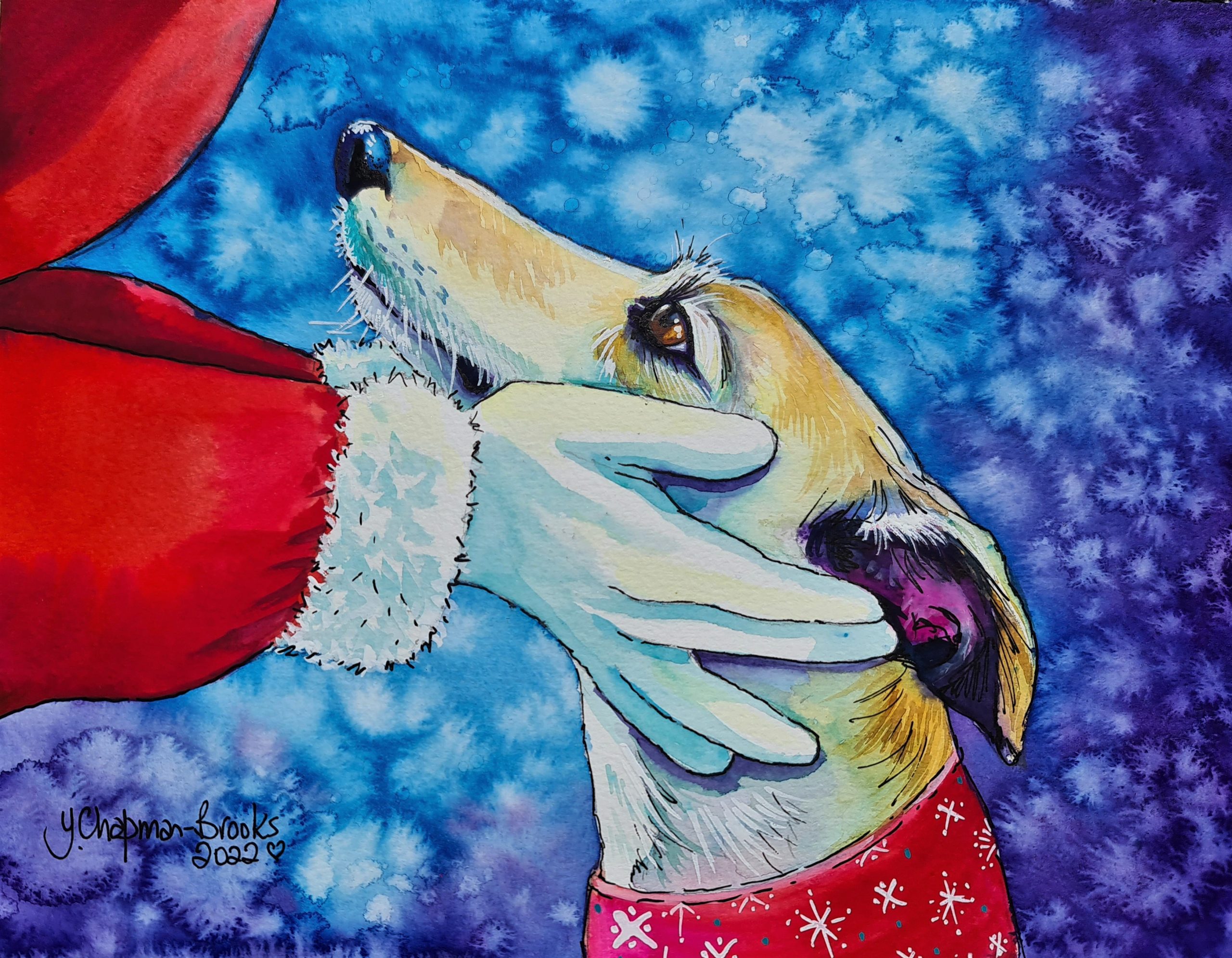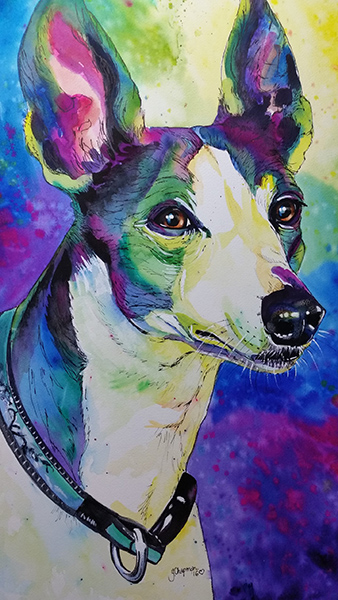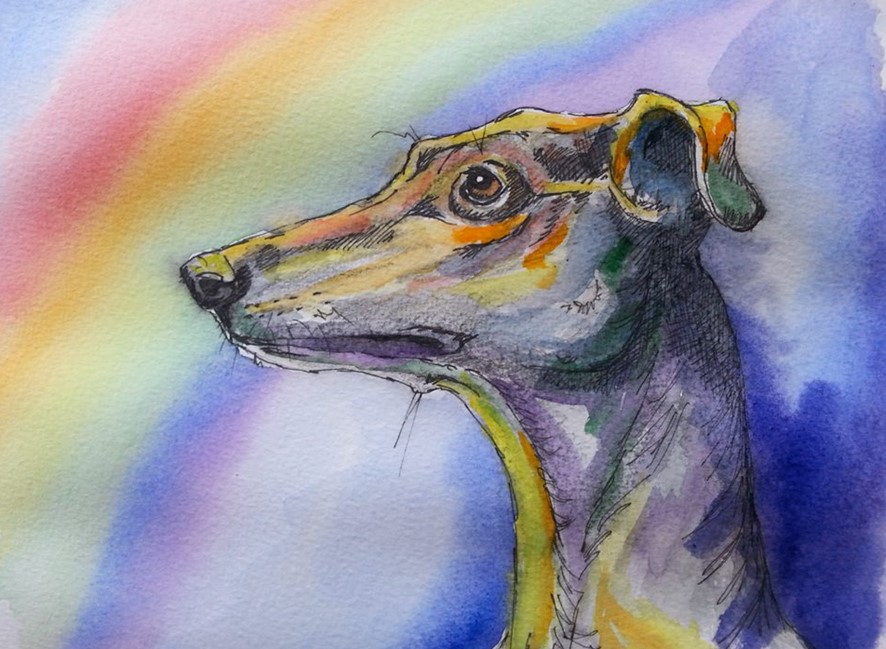
Molly’s Story
This is the story of how were adopted by a beautiful white Boxer dog, and how she loved life and everyone in it. Years ago,

This is the story of how were adopted by a beautiful white Boxer dog, and how she loved life and everyone in it. Years ago,

For the love of a greyhound Its no secret that I love Greyhounds. It started 11 years ago when I fostered my very first greyhound,
One Last Look, a watercolour portrait One Last Look was a painting I recently finished after having a slight doubt in my artistic abilities. For

Let us celebrate with a card or two! It’s that time of year again and once again I have designs for my colourful Greyhound watercolour

It all starts with a good clear photo, one where the subject is not blurred, not too far away in the photo and preferably in

I used to avoid using watercolours, thinking they were boring and “wishy washy”, so my early portfolio consisted of Pastels and Acrylic paintings. I used

Get in touch with Yvonne to book your own commission today!